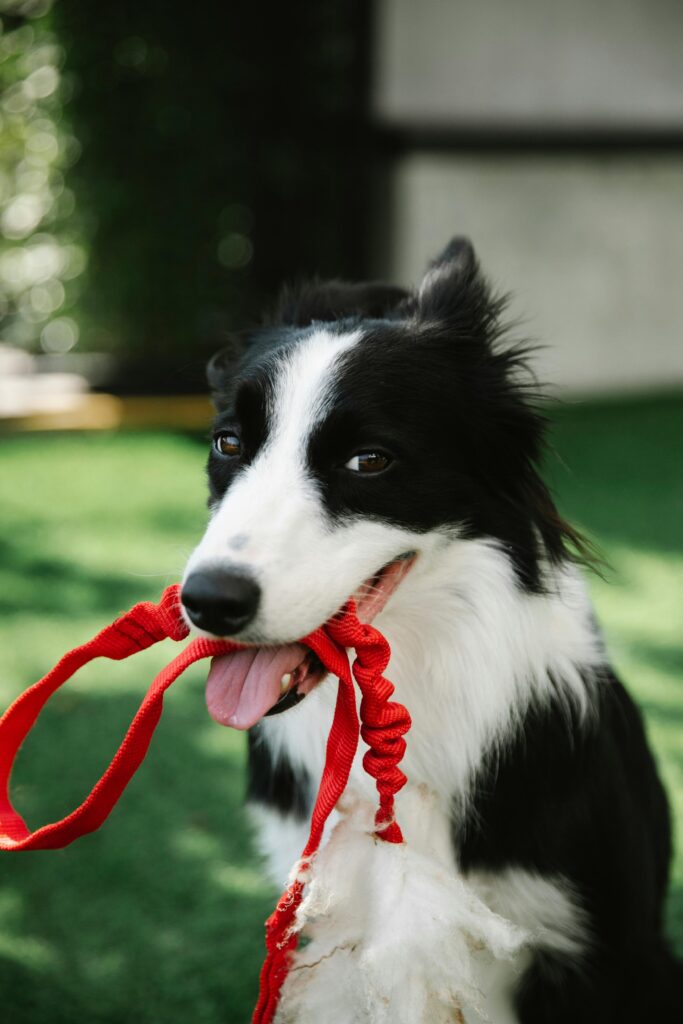Cooler weather is coming, and that means more walks, hikes, and weekend adventures with your dog. But if your pup pulls on the leash like it’s a race, those scenic strolls quickly become frustrating. The good news is, loose leash walking is a teachable skill, and with the right tools and consistency, your dog can learn to walk politely by your side before fall fully kicks in.
As a professional trainer in Toledo, I often meet clients who are embarrassed or exhausted by their dog’s leash behavior. Whether it’s lunging at squirrels or dragging you toward the next smell, leash manners are essential for safe and enjoyable outings.
Let’s walk through how to fix pulling, build better habits, and make your autumn adventures fun for both of you.
What Is Loose Leash Walking?
Loose leash walking means your dog walks beside you with a relaxed leash, not putting tension on it. This is not the same as a formal “heel,” where the dog must stay perfectly aligned. Loose leash walking is a practical, everyday behavior that makes walks more pleasant without requiring military precision.
Benefits of loose leash walking:
- Reduces strain on your dog’s neck and your shoulder
- Keeps your dog more focused and responsive
- Allows you to walk longer and more often
- Makes walks less stressful for both of you
- Improves safety in public areas
If your dog is reactive or overly excited outside, leash skills become even more important. Our Basic Obedience Program is a great first step to help your dog learn foundational control and calm behavior.
Why Dogs Pull in the First Place
Dogs don’t pull because they’re trying to be dominant or disobedient. They pull because it works. From their point of view, tension on the leash equals forward progress. Unless we teach them otherwise, pulling becomes a habit.
Other common causes include:
- Overexcitement
- Lack of impulse control
- Distractions like other dogs or animals
- Inconsistent reinforcement from the handler
- Poor leash equipment
Understanding the “why” is critical before jumping into the “how.” You can find a helpful breakdown of choosing the right leash and training tools in our guide on the best materials for dog sports and training leashes.
Step-by-Step Training: Loose Leash Basics
Here’s a simple and effective method for teaching loose leash walking.
- Start Indoors or in a Low-Stimulus Area
Before adding distractions, practice where your dog feels safe. Use treats to reward your dog for walking beside you with a loose leash. Every few steps, mark and reward calm behavior. - Use a Marker Word
Choose a word like “yes” or use a clicker to mark the exact moment your dog is in position. - Use the Turn-Around Technique
If your dog pulls ahead, stop walking. Call their name and turn in the opposite direction. When they return to your side, reward. This teaches that pulling results in lost progress, while staying close keeps the walk moving. - Build Distance Gradually
Don’t expect a mile-long loose leash walk right away. Celebrate small wins. Start with your driveway, then the sidewalk, then the park. - Keep Sessions Short and Focused
Five to ten minutes of focused leash work is better than 30 minutes of frustration.
Tools That Can Help
While no tool replaces training, using the right leash and collar setup can improve your communication. Avoid retractable leashes and harnesses that encourage pulling.
Better options include:
- Standard 4-6 foot leash (preferably in a durable material)
- Martingale collar or flat buckle collar
- Training collars used under the supervision of a professional
- Treat pouch for consistent rewards
Make sure whatever equipment you use allows you to safely guide and correct your dog without causing harm.
For more insight into collars versus harnesses and how they affect behavior, the AKC offers a helpful comparison based on your training goals.
Add Distractions as You Progress
Once your dog is walking calmly in quiet areas, it’s time to take the skills on the road. Fall markets, hiking trails, and pumpkin patch trips offer great opportunities to reinforce calm walking.
Add challenges like:
- Passing other dogs
- Walking near children or strollers
- Practicing “sit” at crosswalks
- Navigating narrow or busy walkways
Each success in a new setting builds your dog’s confidence and strengthens their bond with you.
Why Consistency Matters
Loose leash walking isn’t about one big breakthrough. It’s built over time, with daily reinforcement and patience. If your dog pulls 50 percent of the time and gets away with it, they will keep pulling.
Make it stick by:
- Not allowing forward motion when the leash is tight
- Rewarding frequently when the leash is loose
- Practicing daily, even if only for a few minutes
- Being clear and consistent with your expectations
Dogs thrive when they know what works and what doesn’t. Make it easy for them to win by creating consistent outcomes.
Final Thoughts
Fall is the perfect time to enjoy long, scenic walks with your dog. Whether you’re strolling through a festival or hiking a leaf-covered trail, having a dog that walks politely by your side transforms the experience.
If you’re struggling with pulling or reactivity, we’re here to help. Our Basic & Advanced Obedience programs are designed to give you and your dog the skills to succeed in any setting.
Want to fix leash frustration before your next adventure? Contact us today to start a custom training plan and make your walks enjoyable again.


